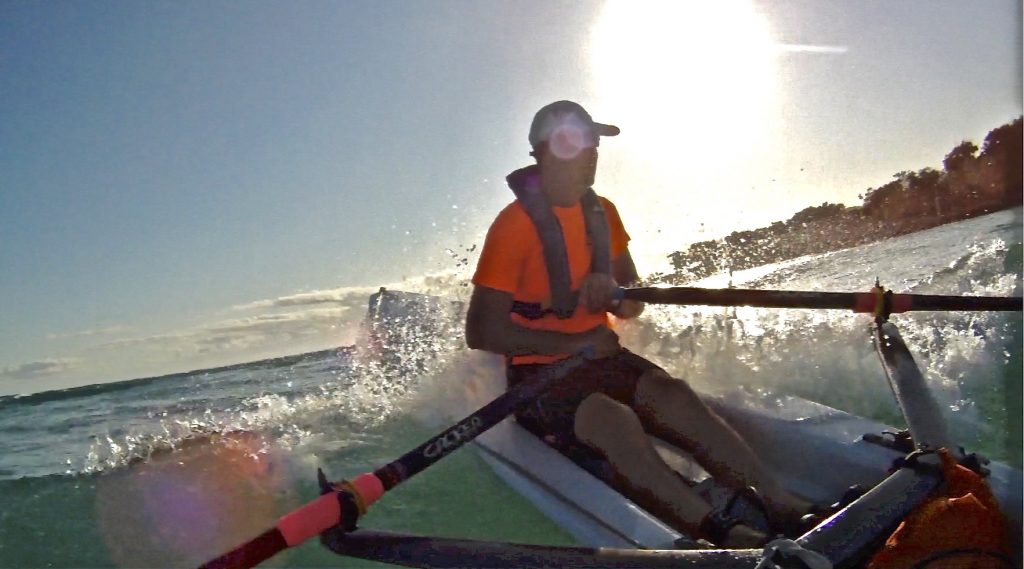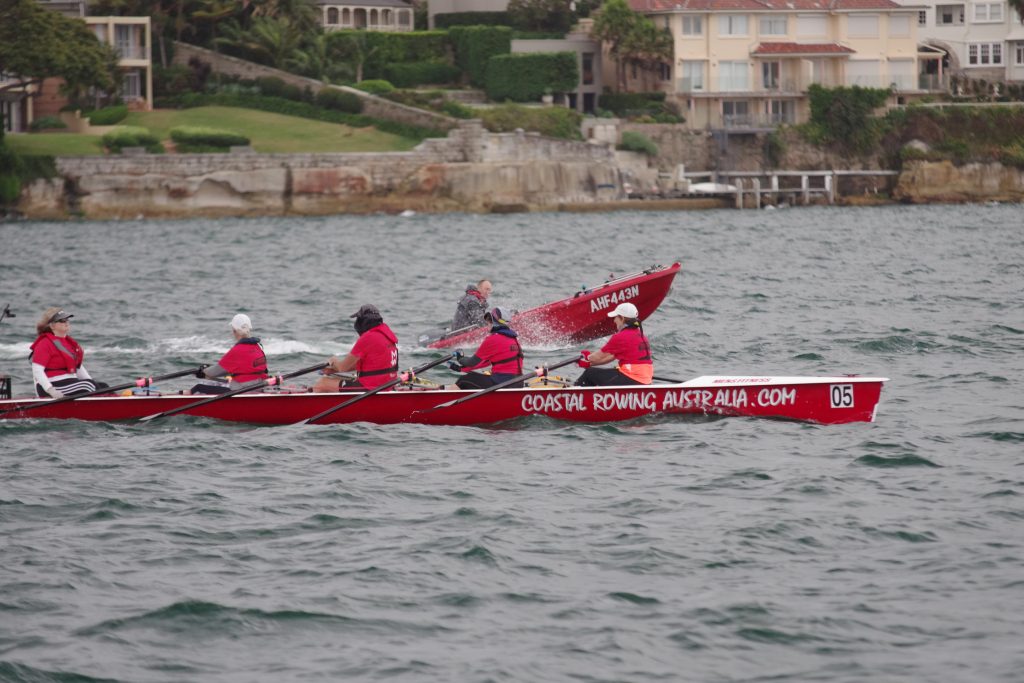
Coastal rowers do not row on flat water! A trip without any waves is, for many coastal rowers, utterly devoid of excitement.
The challenge of coastal rowing is pitting yourself against the elements, racing and interacting with other boats. It develops physical well-being and is exhilarating, unpredictable and at time chaotic. It is also more easily learned than still water rowing, due to the stability and robustness of coastal rowing boats, especially built for coastal conditions. There is great excitement about cutting through waves lapping at your boat and washing over the deck. Coastal rowing may not be for the faint-hearted but you can’t replicate the feeling of catching a wave in challenging conditions. This builds camaraderie, and confidence.
The pinnacle event on the coastal rowing racing calendar is the World Rowing Coastal Championships. These are held in different countries annually, usually in October, and attract competitors from around the world. There are two racing formats Endurance and Beach Sprints. In the Coastal Rowing Endurance format the typical length of the race is typically 6km for heats and 8km for finals with a number of buoyed turns included. Beach Sprint Racing, is another popular format. Athletes start on the beach, sprint down to their boat, jump in, are pushed off the sandy shore, navigate through several buoys out to a distance of 250 meters, where they then return to the beach for a final sprint to the finish line buzzer.
There are seven boat classes for men and women: single scull (or ‘solo’), double sculls, coxed quadruple sculls and a mixed double scull.
To become a good coastal rower, crews must be aware of tides and currents, learn about the course’s topography and know what to do in the midst of maritime traffic and in case of bad weather.

Being fit and knowing how to handle a coastal rowing boat isn’t sufficient to become a good coastal rower. Crews must be aware of tides, wind, waves and currents, learn about the river, estuaries and bays that they are rowing. Knowledge of maritime traffic rules, buoys beacons and lights is important in many areas. Crews should be situationally aware and be able to read and interpret maps and weather. When racing you must at all times be aware of other boats and interact with them!
Rowers should be able to swim at least 300 metres and always have a life jacket at hand. Having an experienced coxswain is essential when crossing bars and operating in exposed or rough waters.
By following a few basic marine safety rules, coastal rowing gives rowers a new freedom to experience the magic moments of some of the best waterways in the world. The camaraderie and enjoyment of Coastal Rowing is second to non. If you are in the area where a coastal boat is based go for a row and experience the exhilaration.

